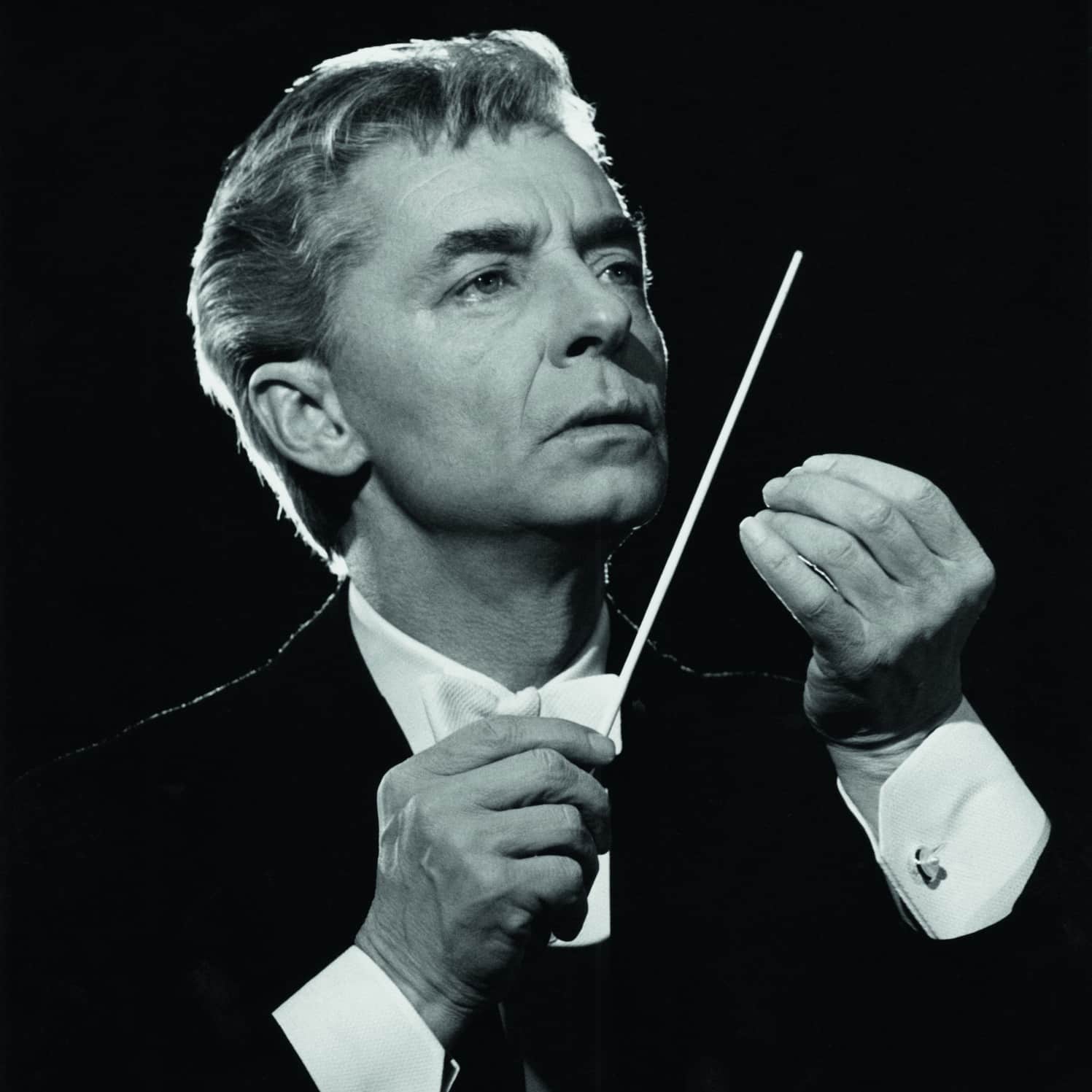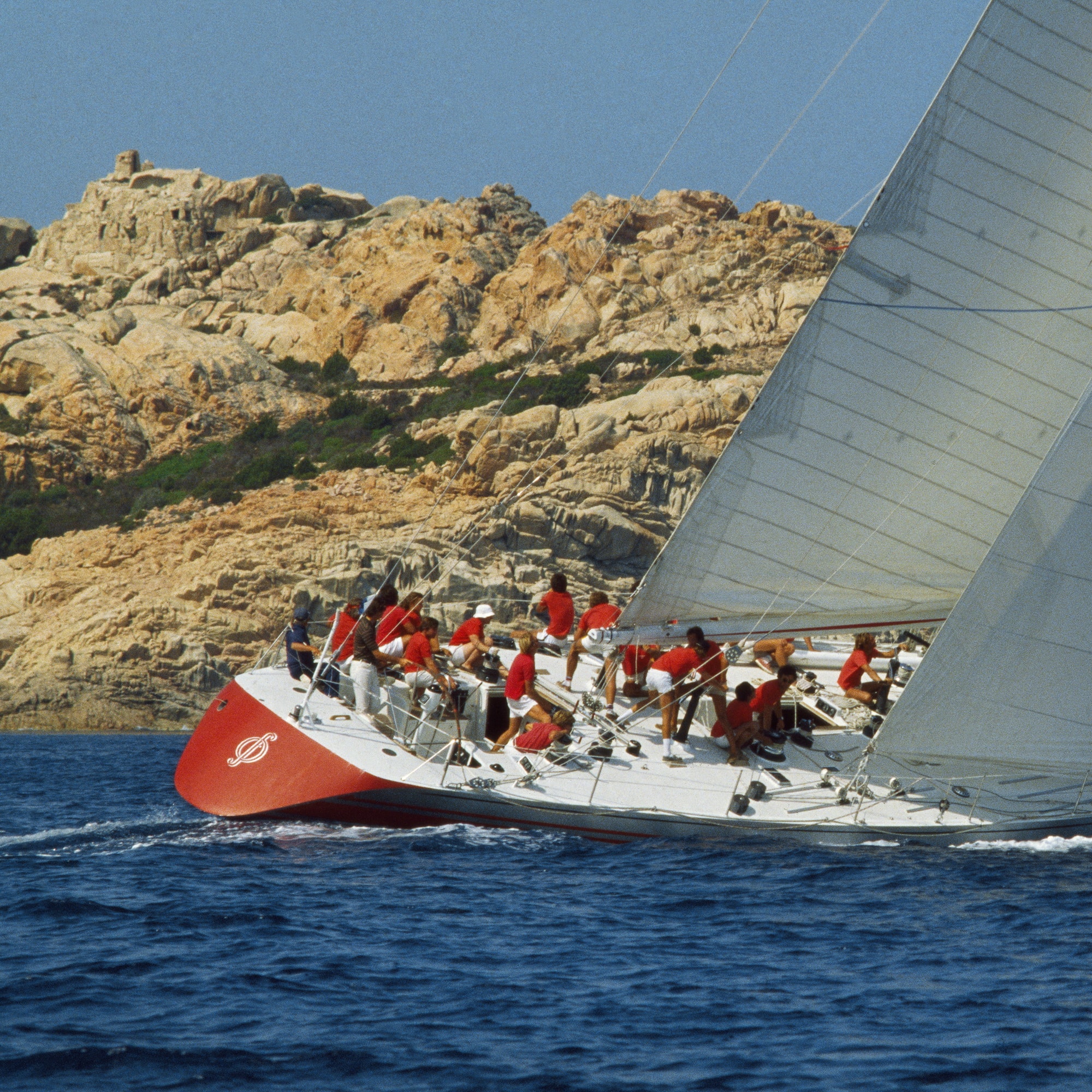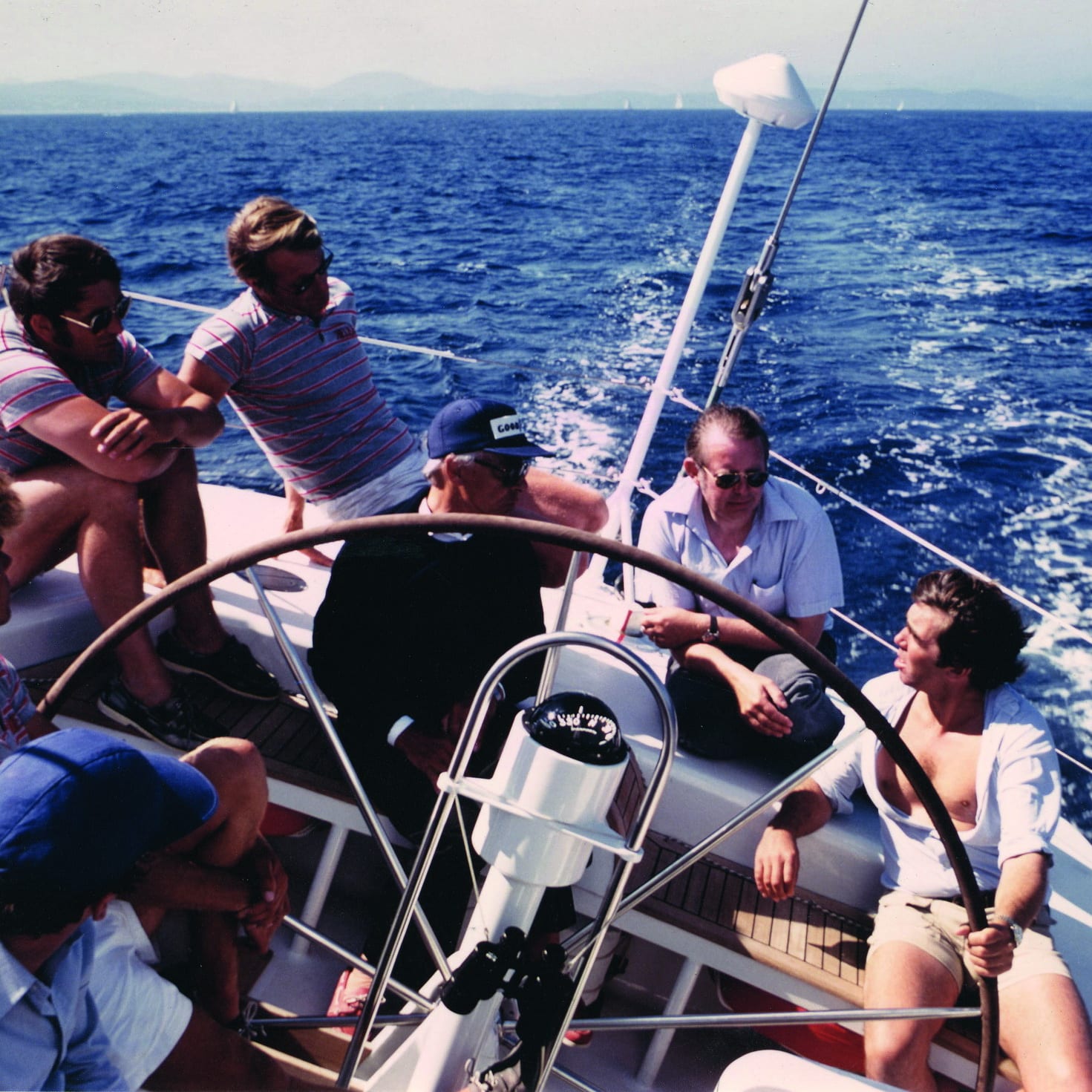Part 3 of “Ready about! – The racing years”
HERBERT VON KARAJAN AND HELISARA
HERBERT VON KARAJAN AND HELISARA
6 MIN READ
…for getting under way, singled up the lines, and we cast off the dock at St. Tropez for our first sail together. This small (167cm / five’-six”), well-tanned, compactly built person took charge of his vessel as easily as he commands the famed Berlin Philharmonic: “Gary, we know what you are all about… my goal is to have perfection in this crew and your job is to carry this out.”
Main photo on top: With a little help from top American sailor Gary Jobson, Von Karajan’s Frers-designed Helisara won the Maxi Worlds at Porto Cervo in 1981.
Right: “Il Maestro” – Herbert von Karajan was the world’s most celebrated orchestra conductor in his time.
It was July 1979. The idea of sailing with Von Karajan, one of the world’s best known and most influential musicians who, in his seventies, piloted his own jet, skied like a devil and commanded his own racing yacht, appealed to me. He had recently written to me:
“Dear Mr Jobson
Thank you very much for your letter. Needless to say it would be a great honour to have the best sailor…in the world giving us advice and training.
Yours sincerely,
Herbert von Karajan
He also wrote to say that he was commissioning Germán Frers to design a new seventy-six foot maxiracer for him; in the interim he had purchased a 39’ Ron Holland-designed Swan, Helisara V, from Nautor. Now, on the first day of sailing with the maestro and his crew I decided I should observe and then make suggestions. “They would like to be pushed to their limits” Von Karajan had said and gradually we began just that, with repetitive tacks, jibes and spinnaker handling to improve their technique.
The routine was simple: Von Karajan came aboard precisely at 2.00pm each day. At 6.00pm the boat was back at the dock. When the Maestro stepped aboard, he was ready for work. He would take the helm – hoping for perfection out of the crew, the same sort of unison he expected out of his orchestra.
Left: Von Karajan, Wolter Huisman and Germán Frers aboard Helisara.
Making smooth tacks and reach-to-reach jibes was difficult at first, but within a day the mostly-French crew was able to go through each manoeuvre smoothly, even in the afternoon winds of up to 25 knots. On the beach sat Von Karajan’s French wife and it seemed as if he were proudly performing for her as much as himself as he directed the movements of Helisara.
That winter, the construction of Von Karajan’s new maxi was well underway at the Huisman yard in Holland but, as I had signed up for the 1980 America’s Cup defence by Courageous, I was unable to sail with him that year. With the Cup behind us, there was more time to think about Helisara and her owner. More letters went back and forth, Von Karajan communicating between concert trips. In December 1980 he wrote to ask “Will you have the time to come to Europe next summer? It would be a great help and an immense joy…” It was an offer I couldn’t refuse and in early July I found myself in St. Tropez again. By this time our relationship had changed to something warmer, although still totally professional. The new boat is a beauty from the board of Germán Frers. I had no idea how she would really sail because Von Karajan still was not committed to major racing. But with the larger boat I was more effective in organising the crew and I decided to convince the maestro to enter the Maxi Worlds in Sardinia that September.
In early September, Janice and I wait in the air terminal in Zürich for the maestro to arrive and fly us in his Falcon Jet to Sardinia. He greets us warmly, then says, “Gary, I think we are in for the battle of our lives”. I reassure him, “It’s not like we’ve never sailed together before. We’ll see how it goes. Privately I know that Helisara has never been put to the extreme test of racing the best there is in the offshore world. On the flight down, Von Karajan concentrates on flying the plane, a chore he takes very seriously. He is very good, putting the plane down at Porto Cervo, as he describes it, “like a butterfly with sore feet.”
Here, beautiful yet threatening, is the assemblage of big racing yachts and professional crews: Ondine is there; the brand new 80’ Kialoa; the 81’ Condor, with Dennis Conner at the helm; the 78’ Xargo with sailmaker and twelve-meter racer Robbie Doyle aboard. “We’re going to have to hustle,” I tell the crew as we begin practicing; but hustling does not seem to be part of their routine, which is to sail out with wine and cheese to do some manoeuvring and head back, as if cruising. After the first day I tell them: “No more wine and food. We want to be hungry and work hard.” There is no grumbling.
In the first race we’re over the line early and involved in a protest, all of which we survive to finish fifth out of thirteen. Everyone feels heartened. In the next two days we do better and better and I realise that Helisara really is fast and the crew is working together well. We place second and third in succeeding races. The final race is some 160 miles, beating up along the north coast of Sardinia through the Strait of Bonifacio to the Gulf of Asinara, where there is a turning mark for home. We start out very competitively with a fair breeze until we reach the Gulf of Asinara and round the buoy. Then the wind dies and the top five maxis are together – Ondine, Kialoa, Bumblebee, Helisara and Xargo.
Von Karajan never leaves the deck. He takes many roles – part time tactician, helmsman, the general of the crew. He never goes below during the entire twenty-four hour race. During the night, I keep the crew moving – this is when races are lost or won because of inattention to trim and sail changing. The crew does its job to keep the boat moving, we are able to pick up some wind shifts and flee the calm area. When the sun comes up, we are about a mile behind Kialoa and two light-years ahead of the rest of the fleet. All day long the breeze comes up as we sail downwind chasing Kialoa “bringing up the new breeze” until finally we are close enough to begin a one-on-one jibing duel, which lasts for fifty miles. The maestro loves every minute of it. We continue to gain. Our jibes are better as their chute collapses and there are some signs of dissolution on Kialoa.
About three miles from the finish line we overtake Kialoa and beat them by fifty-five seconds. “Bravo!” shouts the maestro, his hands clenched in the air, tears streaming down his face. “Bravo!”
There is a great celebration that night. It is one of the proudest moments for a man who spends much of his life taking applause for work well done. But this, somehow, is different.
With grateful acknowledgements to Gary Jobson for these extracts from his book “World Class Sailing”
Continue reading about the racing years on this website > inhuis stories & updates:
- Part 4 – The Maxis and the Flyer Campains [link]
This article was first published in the book “Royal Huisman 125 years The Spirit of Individuality”. Return to part 1 – Ready about! – The racing years [link] or to part 2 – The Admiral’s Cuppers [link]



